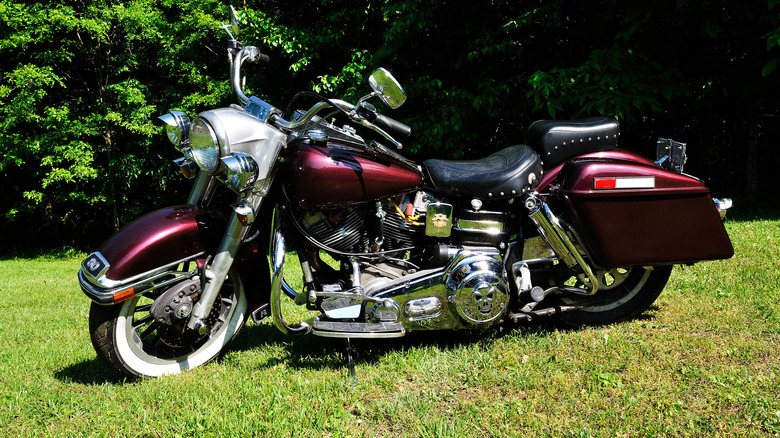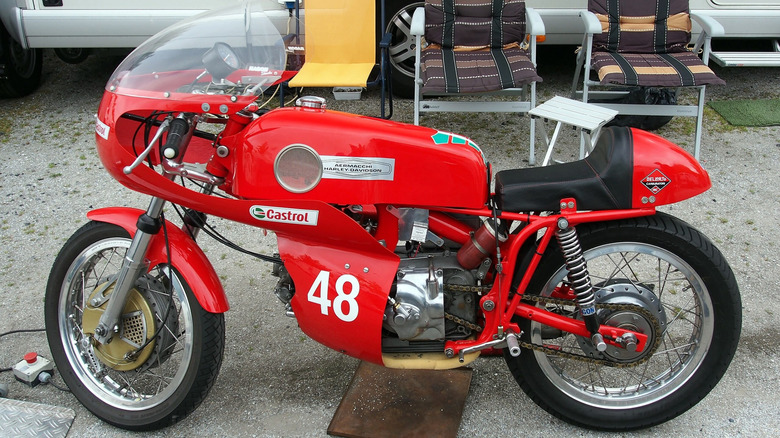Are AMF-Era Harley-Davidsons Worth Anything Today?
AMF-era Harley-Davidson motorcycles were manufactured roughly from 1969 to 1981 and continue to have value even today. Even though most of the bikes during that time won't command a hefty price tag, some of these bikes are still desired by both collectors and enthusiasts who appreciate their vintage style and mechanical simplicity. Most common AMF-era bikes like the Ironhead Sportsters, SX models, and standard Shovelhead cruisers sell in the high-four-figure to low-five-figure range ($4,500 – $12,000). Only rare models like the XLCR or a pristine Electra Glide can consistently hit the "low-five-figure" mark, around $10k or more.
Trying to decide if an AMF-era Harley is 'worth it' really comes down to what you value most. For many buyers, value is strictly a numbers game, made up of real sales history and auction results data. In contrast, a considerable number of enthusiasts give personal meaning to these bikes, valuing nostalgia, being one of the cheaper Harleys to maintain, and the story of Harley-Davidson's era under AMF. The Harley-Davidson models during this time are historically notable because they originated from a period defined by corporate trouble and constant experimentation that resulted in engineering design quirks, such as the four-speed Shovelhead transmission with which it was notoriously difficult to find neutral. Verified sales data, a bike's condition, and how rare it is, identifies what AMF-era Harley motorcycles are worth in both financial and personal terms.
Value drivers and notable models
To understand an AMF-era Harley's value, you have to look at the whole picture. AMF acquired Harley-Davidson in 1969, injecting fresh capital and modern manufacturing capabilities, but it also brought a reputation for reduced quality control. Despite that, the AMF period introduced features that appeal to some riders today, such as disc brakes and modern ignition systems. The primary factors that determine a motorcycle's value are its mechanical and cosmetic condition, along with original paint, factory trim, and having the engine number match the frame. Bikes that meet these requirements can demand a higher premium because originality often makes a world of difference in terms of vintage marketability. Having period-correct seats, exhaust, and wheels all contribute to overall value, whereas bikes with aftermarket parts or modifications usually will get less.
How rare the bike is also plays a role, especially for limited edition models, like in the case with Harley's XLCR café racer, where only 3,000 were made. Another iconic Harley-Davidson motorcycle from the 1970s is the 1973 Big-Twin touring series. Bikes like the FL and FLH Electra Glide with Shovelhead engines continue to appeal to collectors because of their classic styling, touring comfort, and historical meaning. According to Hagerty, a 1973 FL Electra Glide in good condition is priced around $8,500, while motorcycles of that period needing work or considered restoration projects have less value.
Market evidence
The most reliable way to see what AMF-era Harleys are worth today is through actual U.S. sales data of bikes sold. According to Bring a Trailer, a 1978 Harley-Davidson XLCR café racer with a 998cc Ironhead V-Twin engine sold for $9,000 in May of 2025, which confirms Hagerty's report. Beyond that, other XLCRs reflect the same pattern. A similar 1977 XLCR was sold for $10,500 in September 2025, despite being updated in 2022 with upgraded brakes, ignition, and carb work, highlighting that correct core components and having a solid mechanical condition are more valuable to buyers than untouched originality.
On the higher end of things, a 1977 XLCR previously sold for $11,025, according to Hagerty's past-sales data, and another got $23,100 in 2023, showing how strong the valuation is on these rare Harley-Davidson motorcycles. Aside from just café racers, AMF-era big-twin touring models also show a significant value spread depending on condition. For example, Cycle Trader lists a few 1970s Harley-Davidson Shovelhead models in running condition from $5,500 to $12,500. These results indicate that condition, model desirability, and core component authenticity are the main driving forces for realized value.


